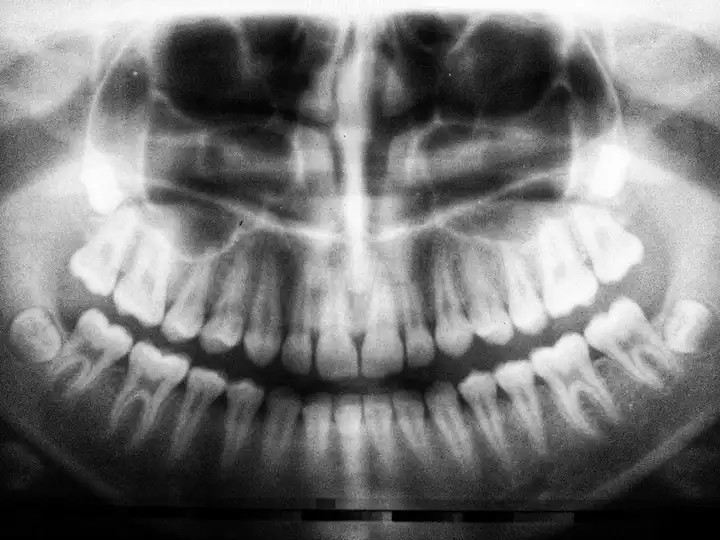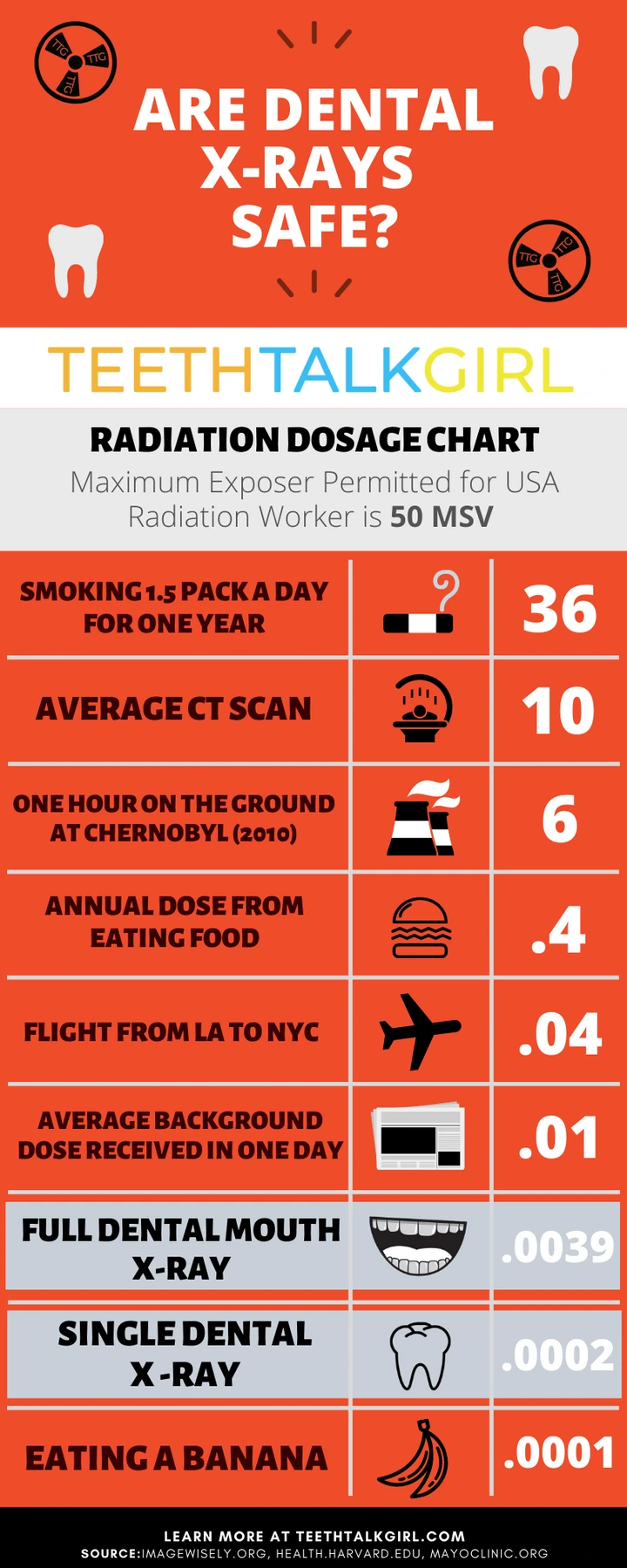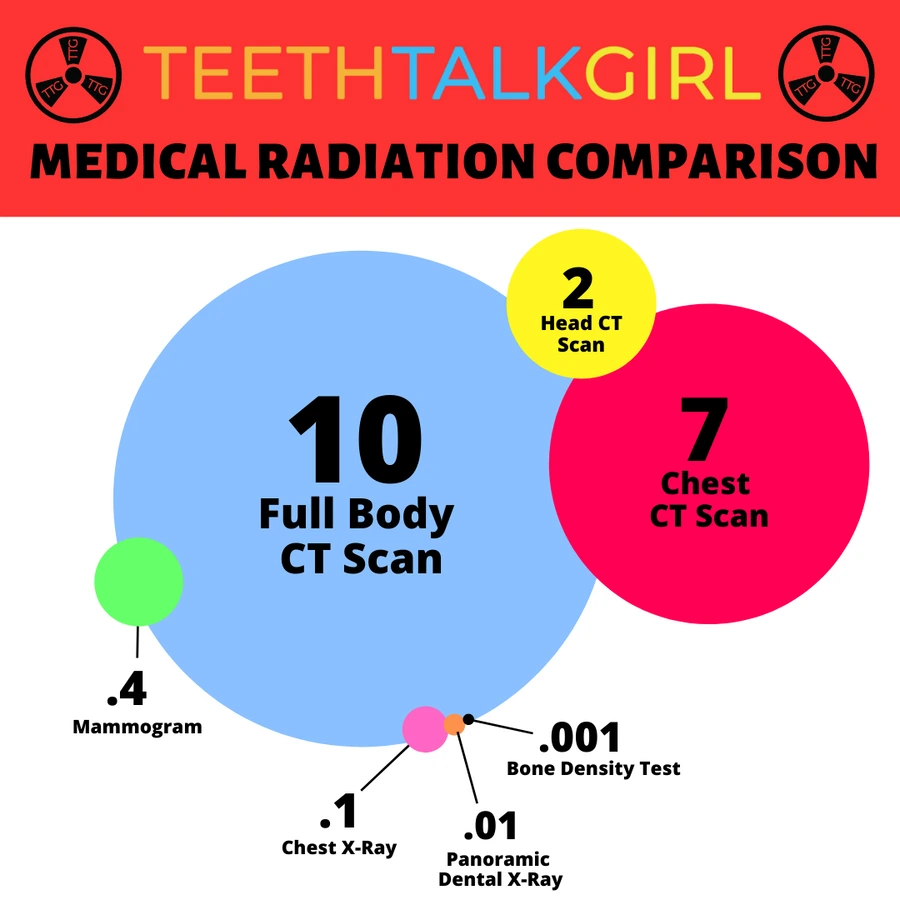Are Dental X-Rays Safe?


Are you a little skeptical when it comes to getting dental X-rays? Are dental X-rays safe? If you’ve ever wondered how much radiation you’re really getting exposed to when it comes to your regular dental visits, you’re not alone. After all, why is your dentist draping you with a huge lead apron every time you get X-rays taken?
Here’s where the acronym “ALARA” comes in. It stands for “as low as reasonably achievable.” It’s the standard for radiation exposure when any dental patient has X-rays made, no matter how many! With ALARA, every precaution is taken (aka, covering your thyroid and reproductive glands with a thin layer of lead, which by the way is impenetrable by the tiny beams of radiation being used!)
Why Are Dental X-Rays Performed?
X-rays show us what’s not visible with the naked eye. So, when it comes to the bone and structures under your gums and between your teeth, X-rays are a crucial part of your dental exam.
If you skip your dental X-rays, you could essentially be in the dark when it comes to tooth decay, gum disease, bone loss, cysts, abscessed teeth, cracked roots, or leaky dental work. By the time those conditions are visible without X-rays, they’re usually way worse and even more expensive to treat than they would have been, had they been diagnosed earlier.
Are Dental X-Rays Safe?
Yes. First off, today’s digital X-rays don’t use near as much radiation as what traditional radiographs (X-rays) did a couple of decades ago. But even then, they were still safe!
Today it’s possible to take a FULL mouth series of dental X-rays using less radiation than what you would be exposed to on an airplane flight from LA to NYC, or just eating food. In fact, a SINGLE tooth X-ray is exactly double the radiation that you get from eating a banana. Yep. It’s that low.

Dental X-Rays While Pregnant
In some cases, it may be essential to have a dental X-ray taken while you’re pregnant. Now here’s what you need to know: radiation is only a concern when it affects reproductive organs. Are dental X-rays safe? As long as you have a lead apron covering those areas of your body – including your baby’s – there’s really nothing to be concerned with. Especially since dental X-rays use such little radiation altogether.
Still, most dentists will recommend waiting to get X-rays until after you have the baby just to be on the safe side. But if you have a toothache or dental infection, it can be completely safe to take X-rays while pregnant as long as standard protocols are followed.
Types Of X-Rays
Not all dental X-rays are created equal. The type of image that your dentist orders will depend on what they need to check for. Here are the five most common:
Bitewing (BWX):
A type of routine X-ray that helps screen for cavities between the back teeth.
Periapical (PA):
When you need to see the entire root and area around it (like to check for an abscess,) this is the film that’s used.
Full Mouth (FMX):
A series of periapical and bitewing images to capture a full-mouth picture of all areas and teeth in your mouth.
Panoramic (PAN):
A full-mouth image that captures your jaws, TMJ, and areas around your wisdom teeth.
Occlusal:
Used to check developing/erupting permanent teeth in the front of a child’s mouth.

Digital X-Rays Vs. Traditional X-Rays: What’s The Difference?
Traditional X-rays use a special type of film that is processed similar to traditional photographs. Once it’s “exposed” (meaning the X-ray is “shot” with the machine) the films are dipped in special chemicals to process which areas were or were not affected by the radiation. This process was both time-consuming and involved harsh chemicals that had to be changed out every few weeks. It also required a bit more radiation to get the films to come out clearly.
With digital X-rays, even less radiation is needed. But the best part is that the images are available almost instantly on the digital screen next to the machine. That way patients can get faster diagnosis and more efficient care. Plus, there’s no chemical or material waste.
Final Thoughts On Dental X-Rays
Your dentist and hygienist use dental X-rays to see areas of your mouth that aren’t visible. The type of films they use will depend on what they’re looking for or what they need to see. Any time images are taken, the ALARA principle is used and protective measures are taken. Fortunately, digital X-rays use drastically low levels of radiation, making them even safer than the background radiation you’re exposed to on an everyday basis.

Make your inbox smile!
Subscribe






